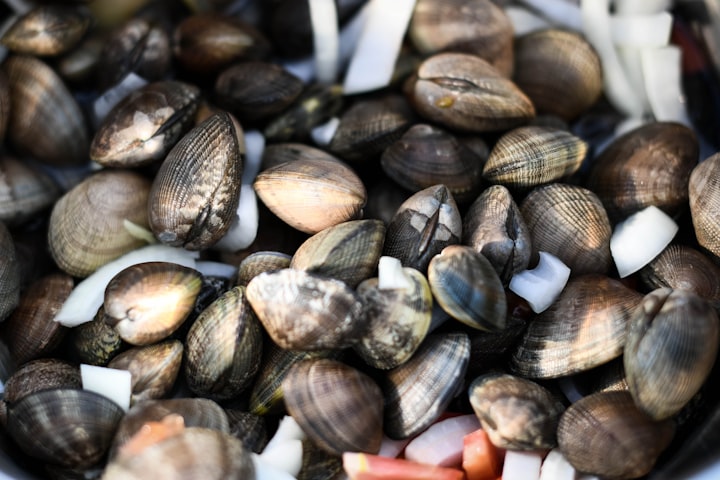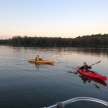Intertidal Magic
Summer Clamming in the Pacific Northwest

I am not a native Pacific Northwesterner. My husband and children have that birthright; for me, I fell in love in my twenties with this misty region where snow-capped volcanoes and rocky mountains mingle with temperate rainforests and orcas frequent the inland sea. It is home to giant tides, where the vertical height of the water can change by sixteen feet within a single day- it can creep over shorelines to shape beaches at one point, and twelve hours later it will draw back to the point that entire bays and sandbars appear, the waterline now more than a thousand feet from shore. It is here, within the mysterious intertidal zone, that my favorite mysteries of the Northwest lay waiting to be discovered. It is also home to one of my favorite delicacies, intertidal clams.
Nestled amongst the sand and gravel, mere inches beneath the surface, a culinary treasure hides. The only clue is the mosaic of pea-sized holes in amongst the exposed beach sediments. In our region, three species can be found at the top of the system. Of those three, only the littleneck clam is native. Its near-twin, the manila clam, might as well be, as it’s been a resident of Puget Sound for almost as long as Europeans. Named for the capital city of the Philippines, it is a welcome immigrant that is heartier than the native littlenecks when harvested on hot days and tends to fetch a higher price at market due to size, weight and abundance. The local varnish clam has been newly inhabiting a higher tidal level than manilas and littlenecks. Also called the savory clam, these relocated bivalves are making their way into restaurants throughout the state of Washington and throughout coastal British Columbia.
In the PNW, clams are a way of life. The Coast Salish tribes will place their clams by the thousands on piled beach rocks, preheated with firewood until they are too hot to touch, and layer wet newspaper soaked in seawater on top, or if they are traditionalists, layers and layers of bull kelp. They will dance and visit until the clams begin to pop open, a sign that they are ready to eat. Everyone is welcome to eat their fill; even the babies eat pounds and pounds. The early clams on the pile taste fresh and sweet; kissed by the ocean. Later, the sweetness and the toughness intensifies until the clams become rubbery, sweet and shelf-stable. Parents will seek out these treats for fussy babies as dried clam jerky makes a wonderful and nutritious teething tool. Ancient tribal members would steam or smoke clams to string onto long necklaces for their warriors. This would provide days or weeks of nourishment for trips by traditional canoe.
Europeans, Asians and Pacific Islanders here all have a long-standing history with clams as well. It is a local rite of passage to learn how to find and dig your own clams, to purge them overnight in salt water so that they’re not gritty and cook them in your favorite way. You can find clams in any restaurant that features local foods, whether steamed in garlic and butter and white wine with crusty bread to dip, curried in your favorite Asian flavors or battered and deep-fried.
While they can be dug and eaten anytime the local agencies have given the all-clear for red tide and clean, safe water, eating clams in the summer is especially wonderful. They bring with them a tangible memory of unscheduled hours exploring beaches and collecting shells. They are mud-covered boots and holding hands with my children as toddlers as we searched for sea stars and nickel-sized baby flatfish in tide pools. They were one of my first tastes of something uniquely Northwest, a welcome gift from locals who had been here for generations upon generations. They are the flavor of belonging in my adopted community, of living a little bit off the land and the excitement of finding a treasure that’s been hidden by the tides more days than not. They are the best taste of home.
About the Creator
Penny Fuller
(Not my real name)- Other Labels include:
Lover of fiction writing and reading. Aspiring global nomad. Woman in science. Most at home in nature. Working my way to an unconventional life, story by story and poem by poem.






Comments (2)
Very well-written -- it teaches the reader something new with a personal touch. Lovely descriptions.
Superb!!!💖💕